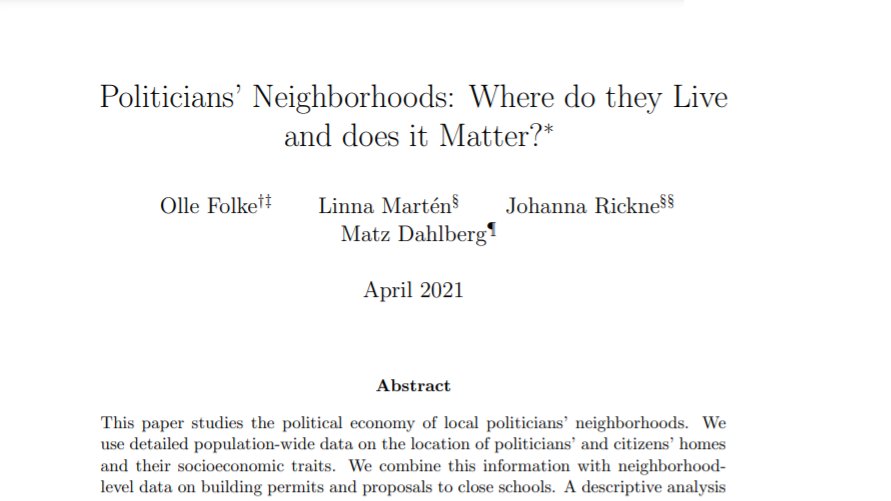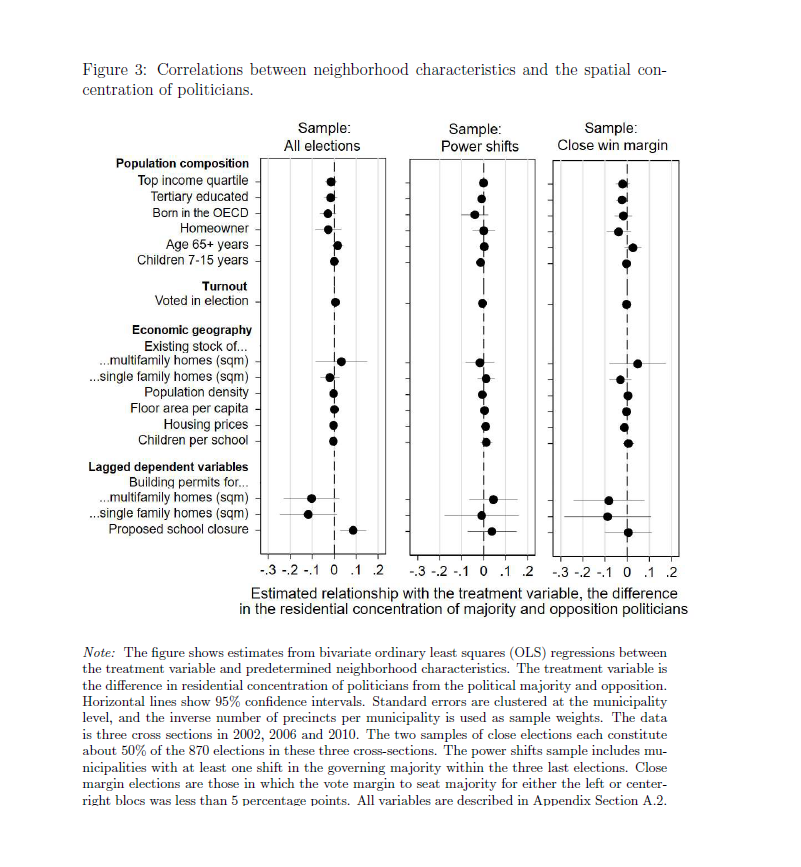We have a New Working Paper on the political economy of politicians’ neighborhoods! We show that politicians live in richer neighborhoods and protect them from undesirable buildings and the removal of public goods. A thread 1/11, and the Paper: https://www.nottingham.ac.uk/research/groups/nicep/documents/working-papers/2021/nicep-2021-03.pdf">https://www.nottingham.ac.uk/research/...
Politicians should represent their whole district and not favor their neighborhood. Yet, our Swedish data shows that they do. These results come from admin data for the geolocations of all local councilors& #39; homes and all new building permits and school closures (1991-14). 2/11
What are the traits of politicians’ neighborhoods? They have higher incomes, more people with tertiary education, more people born in the OECD, and more homeowners. 3/11
Do politicians protect their neighborhoods from undesired buildings? Yes, there are fewer building permits for multifamily homes allocated to these neighborhoods, and a lower likelihood that an existing school is subject to a proposal for closure. 4/11
How larger are the effects? For multifamily homes, a shift in the governing majority from the political left to right, or vice versa, re-allocates 14% of the new permits during the next election period from the winning to the losing politicians’ neighborhoods. 5/11
Is this an effect of politicians’ living where it would be less efficient to build or close schools? Likely not. Our identification strategy of comparing outcomes of close elections holds constant traits like the existing building stocks of different types, pop. density etc. 6/11
Is it an effect of politicians living in neighborhoods where more people protest undesirable decisions? The same strategy also holds constant the socio-economic composition of the neighborhood in terms of education, income, etc. (see previous Figure). 7/11
Is this an effect of politicians living with and representing their voters? No, at least not entirely. Politicians *do* live in places where their party has a larger vote share (see Fig). But our main findings are robust to holding constant vote shares in the neighborhoods. 8/11
Local governments handle important issues in people’s lives and many of these have spatial dimensions. Decisions about the built environment and public services shape the level, and inequality, of living standards for people in the municipality. 9/11
Our paper gives evidence of a new mechanism whereby the political system affects these outcomes. Politicians have their own homes in certain, affluent, neighborhoods and protect these areas from undesirable outcomes. 10/11
Thanks to people whose work helped inspire this paper! Marcia Grimes, Peter Esaiasson, Luca Repetto, @trounstine, @msgHankinson, @jesselyoder @andrewbhall, @Halsevesenet, @JFiva, @laderafrutal. For concurrent work on Finland by @JanneTukiainen et al, see: https://papers.ssrn.com/sol3/papers.cfm?abstract_id=3765518">https://papers.ssrn.com/sol3/pape...

 Read on Twitter
Read on Twitter






